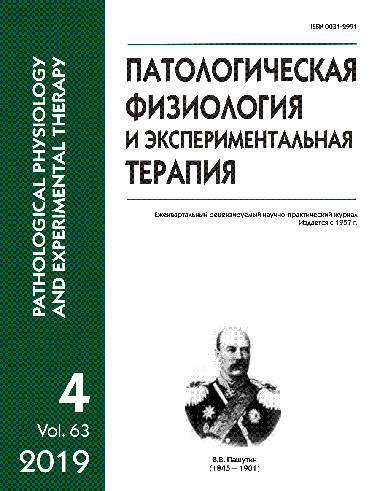HIF-1 – альтернативные сигнальные механизмы активации и формирования толерантности к гипоксии/ишемии
DOI:
https://doi.org/10.25557/0031-2991.2019.04.115-122Ключевые слова:
HIF-1α, сигнальные механизмы, нейропротекция, гипоксия, гиперкапнияАннотация
Альтернативные сигнальные механизмы активации транскрипционного фактора HIF-1 принципиально можно подразделить на 3 типа: связанные с ингибированием пролилгидроксилаз и ограничением деградации HIF-1α; связанные с индукцией HIF-1α; связанные с активацией HIF-1α. Особый практический интерес представляет активация фактора HIF-1 во время гиперкапнии, которая часто сопутствует гипоксии. Пермиссивная гиперкапния вызывает повышение концентрации HIF-1α в ткани головного мозга и потенцирует активацию HIF-1α, что выражается в повышении содержания HIF-1α в гиппокампальных нейронах СА1 региона после гиперкапнически-гипоксического воздействия. При изолированном применении гипоксии аналогичный эффект отсутствует. Перспективным для разработки методов повышения толерантности органов и тканей к гипоксии/ишемии является комбинирование средств, повышающих активность HIF-1, с респираторными гиперкапническигипоксическими тренировками и препаратами, влияющими на другие адаптогенные механизмы.Загрузки
Опубликован
2019-11-14
Выпуск
Раздел
Обзоры
Как цитировать
[1]
2019. HIF-1 – альтернативные сигнальные механизмы активации и формирования толерантности к гипоксии/ишемии. Патологическая физиология и экспериментальная терапия. 63, 4 (Nov. 2019), 115–122. DOI:https://doi.org/10.25557/0031-2991.2019.04.115-122.













